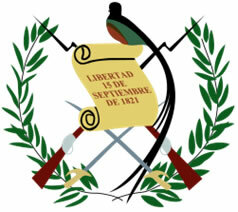Located in West Africa, Equatorial Guinea is made up of three discontinuous territories: two insular (Bioko island and Pagalu island) and one mainland (Mbini). The island of Bioko is the most inhabited region in the country, where the capital Malabo is located, inhabited by 96,000 people. The mainland portion of Equatorial Guinea (Mbini) borders Cameroon (to the north), Gabon (to the south and east) and the Gulf of Guinea (to the west).
The country was first occupied by the Portuguese (1470), however, in 1778, the Spanish began the colonization of Equatorial Guinea. Independence was only obtained on October 12, 1968. The first president was Francisco Nguema, a sorcerer who used the ingenuity of the local population to practice a policy of terror. An estimated 50,000 opponents were murdered during his government. However, in 1979, he was deposed and executed by Lieutenant Colonel Teodoro Obiang Nguema Mbasogo, his nephew.
With the discovery of oil and gas reserves in the 1990s, Equatorial Guinea's economy strengthened considerably. The country has become a major oil producer and exporter, just like Kuwait.
Agriculture is another activity developed in the country, with a strong emphasis on the cultivation of cotton, coffee, sugar cane and a wide variety of fruits. Livestock raising, timber exports and fishing are other elements of the national economy.
Equatorial Guinea has the highest GDP per capita on the African continent – US$19,998, however, the income distribution occurs unequally, in which wealth is concentrated in the hands of government officials and company owners international.
Do not stop now... There's more after the advertising ;)

Coat of Arms of Equatorial Guinea
Data from Equatorial Guinea:
Territorial extension: 28,051km²
Location: Africa
Capital: Malabo
Climate: Equatorial
Government: Republic with mixed form of government
Administrative division: 4 mainland regions and 3 islands.
Language: Spanish (official), French, English, fangue, combe, balenque
Religion: Christianity, 88.5% (Catholics, 83.5%, others, 5%), Islam, 4%, non-religious beliefs and atheism, 5%, others, 2.5%.
Population: 676,273 inhabitants (Men: 335,402; Women: 340,871)
Ethnic composition: Fangues, 80%, bubis, 15%, others, 5%
Demographic density: 24 inhab./km²
Average annual population growth rate: 2.6%
Population residing in urban areas: 39.5%
Population residing in rural areas: 60.5%
Life expectancy at birth: 50.8 years
Households with access to drinking water: 43%
Households with access to a health network: 51%
Human Development Index (HDI): 0.538 (average)
Currency: Guinea Franc
Gross Domestic Product (GDP): 18.5 billion dollars
GDP per capita: $19,998
External relations: World Bank, IMF, UN, AU
By Wagner de Cerqueira and Francisco
Graduated in Geography
Brazil School Team
countries - geography - Brazil School

